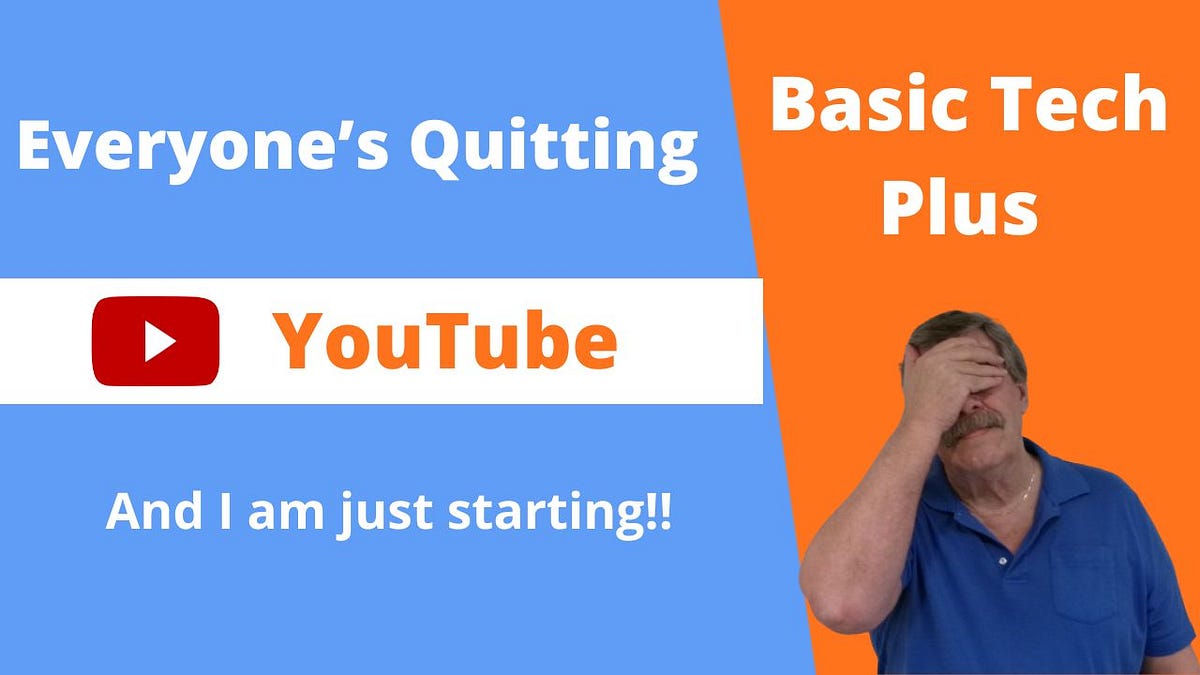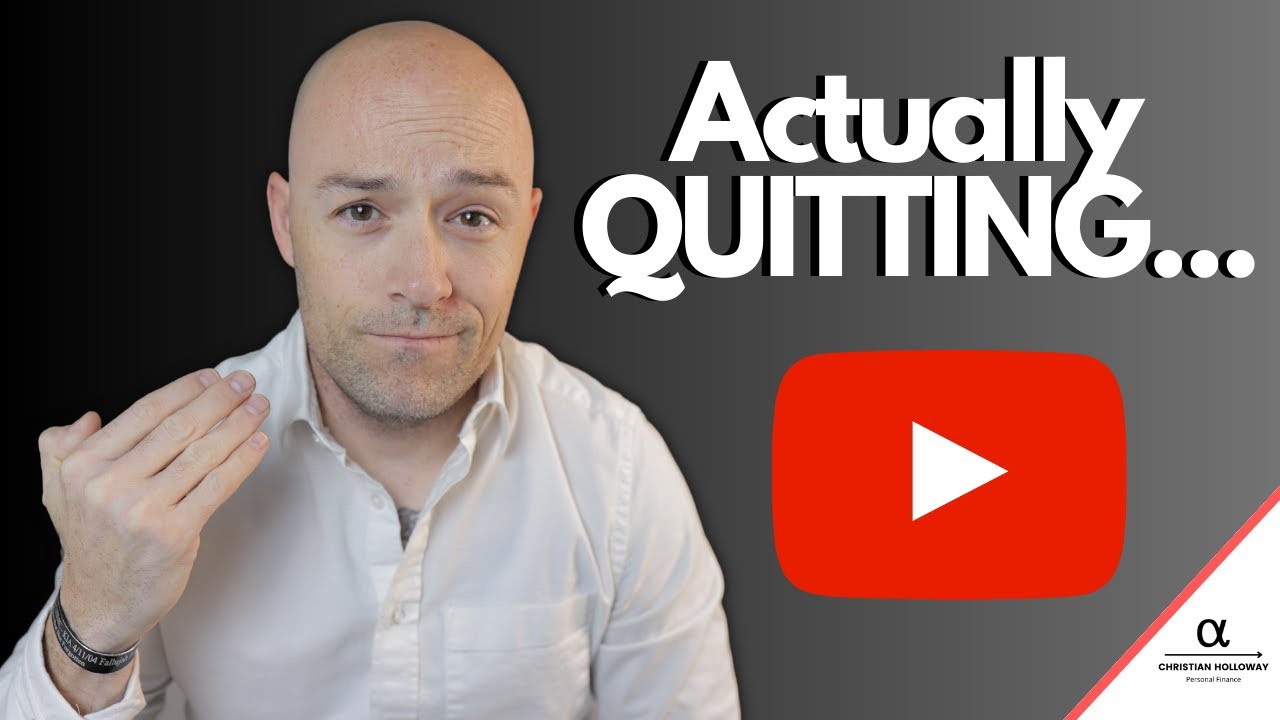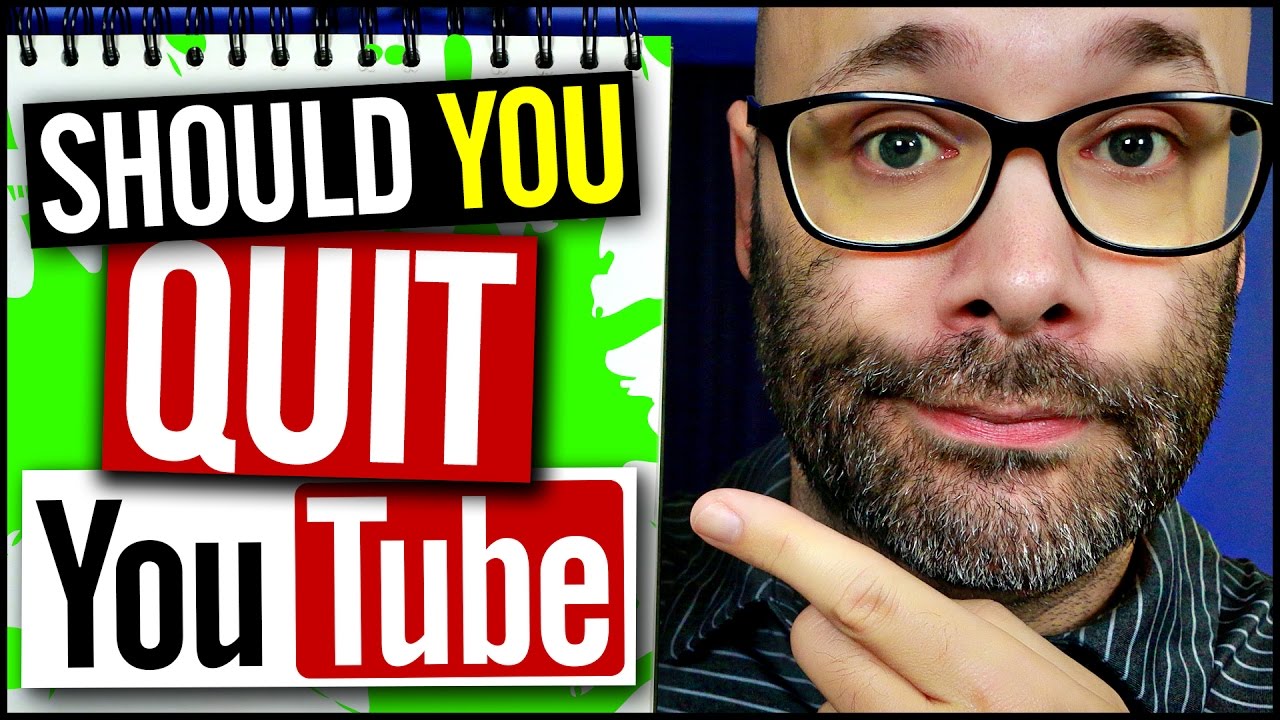Thinking about quitting YouTube? You're not alone! Many creators reach a point where they question their journey. This post explores key considerations to help you make an informed decision. Let’s dive into understanding your reasons for quitting and evaluating your channel's performance.
Understanding Your Reasons for Quitting

Before you hit that "delete channel" button, take a moment to reflect on why you want to leave YouTube. Understanding your motivations can provide clarity and help you make a thoughtful decision. Here are some common reasons people consider quitting:
- Burnout: Creating content can be exhausting, leading to burnout. Have you been feeling overwhelmed by the demands of regular uploads?
- Lack of Engagement: If your videos aren’t getting the views or comments you hoped for, it’s natural to feel discouraged. Are you feeling underappreciated or invisible in the vast sea of creators?
- Changing Interests: Sometimes, what once excited you no longer does. Has your passion for making videos faded? Are you drawn to other projects or hobbies?
- Financial Issues: For some, YouTube is a source of income. If your channel isn't monetizing as expected, you might feel pressured to walk away. Are you finding it hard to make ends meet?
- Negative Environment: The comments section can be brutal. Have you encountered cyberbullying or negativity that made you second-guess your presence on the platform?
Once you've identified your reasons, consider writing them down. Acknowledge your feelings and think about whether these issues can be addressed. For example, if burnout is your main reason, could taking a short break or collaborating with others reignite your motivation? Sometimes, a little distance can provide perspective.
Also Read This: Does YouTube TV Offer Bally Sports? Regional Sports Access
Evaluating Your Channel's Performance

Before saying goodbye, it's vital to assess your channel's performance. This will help you understand if your efforts are aligned with your goals. Let's break it down into a few key areas to analyze:
- Analytics: Check your YouTube Analytics for insights. Are your view counts trending upwards? Look for patterns in your most popular videos. Are they the type of content you enjoy creating?
- Audience Feedback: Engage with your viewers! What comments do you receive regularly? Positive feedback can be a great motivator, while constructive criticism can help you improve.
- Content Quality: Reflect on your content quality. Are you proud of your recent videos? If you feel your content has declined, consider what changes could be made. Would new equipment or a different editing style help?
- Consistency: Have you been consistent with uploads? Building an audience often requires a steady schedule. If life has gotten in the way, consider whether a new upload strategy could work for you.
- Goals Reassessment: Revisit your goals. What did you aim to achieve when starting your channel? Are these goals still relevant? Adjusting your expectations can relieve pressure and renew your enthusiasm.
After evaluating these factors, you may find reasons to stay or decide that it’s time to move on. Remember, it's okay to take a break or pivot your content focus. Whatever you choose, make sure it aligns with your values and aspirations. YouTube should be a creative outlet, not a source of stress!
Also Read This: How to Save a YouTube Short to Your Camera Roll for Easy Access
3. Impact on Your Audience and Community

Quitting YouTube can have a significant ripple effect on your audience and community. Think about the relationships you've built over time. Your subscribers are not just numbers; they are real people who connect with your content on a personal level. When you decide to step away, it’s crucial to consider how that decision impacts them.
Engagement and Connection: Your followers likely tune in not just for your videos, but for the community you've fostered. They might have shared stories, interacted in comments, or even formed friendships through your channel. If you quit abruptly, it can leave them feeling abandoned or confused. Take a moment to acknowledge this connection and think about how you can communicate your decision thoughtfully.
Maintaining Transparency: If you’re considering quitting, keeping your audience in the loop is essential. A heartfelt video or post explaining your reasons can go a long way. It shows you care about their feelings and value their support. This transparency can help ease their disappointment and foster understanding.
Future of the Community: Consider what will happen to the community you've built once you leave. Will your audience continue to support each other? Could you hand over the reins to someone you trust? Creating a plan for the community's future can help ensure it thrives even after you step back.
In summary, quitting YouTube isn't just a personal decision; it's one that affects your audience and community. Being mindful of their feelings and planning how to communicate your decision can help maintain the bonds you've built over time.
Also Read This: How to Record Mental Omega Gameplay on YouTube
4. Exploring Alternatives to Quitting
Before making the big leap to quit YouTube, consider some alternatives that might help you reclaim your passion without saying goodbye completely. Here are a few options to explore:
- Taking a Break: Sometimes, a short hiatus can reignite your creativity. Consider stepping back for a few weeks or months. This time away allows you to recharge and return with fresh ideas.
- Changing Content Direction: If you're feeling burnt out, maybe it’s time to pivot your content. Explore new styles or topics that excite you. For example, if you’ve been focused on tutorials, try vlogging or sharing behind-the-scenes content instead.
- Collaborations: Partnering with other creators can provide new energy and perspectives. Collaborations can introduce your content to new audiences and rekindle your enthusiasm.
- Setting Boundaries: Sometimes, burnout comes from feeling overwhelmed by expectations. Assess your upload schedule and engagement levels. Consider reducing your posting frequency or focusing on quality over quantity.
- Seeking Support: Reach out to fellow creators or mentors. Discussing your feelings can provide insights and encouragement. You’re not alone in this journey, and others can share their experiences.
In conclusion, quitting YouTube doesn’t have to be your only option. By exploring these alternatives, you might find a path that allows you to continue creating and connecting with your audience in a way that feels fulfilling and manageable. Remember, your well-being is the priority!
Also Read This: Can You Watch NESN on YouTube TV? A Guide for Sports Fans
5. Managing Your Mental Health and Well-being
Quitting YouTube is not just a career decision; it’s an emotional one too. The pressures of content creation can take a toll on your mental health, and stepping away can bring relief. However, it’s essential to handle this transition mindfully. Here are some key considerations:
- Recognize Your Feelings: It’s okay to feel a mix of relief, sadness, and uncertainty. Acknowledge your emotions and give yourself permission to experience them. Journaling can be a great way to process these feelings.
- Seek Support: Talk to friends, family, or even a therapist. Having someone who understands your journey can make a significant difference. There are also online communities where you can share your experiences with fellow creators.
- Set Boundaries: If you decide to take a break, establish clear boundaries. Limit your screen time or social media usage to avoid the temptation of diving back in too soon. Consider using apps that help track and manage your online activities.
- Engage in Offline Activities: Rediscover hobbies or activities that you enjoy outside of YouTube. Whether it’s painting, hiking, or cooking, immersing yourself in the physical world can rejuvenate your spirit.
- Practice Mindfulness: Techniques like meditation or yoga can help you stay grounded and reduce anxiety. Apps like Headspace or Calm can guide you through mindfulness exercises.
Remember, prioritizing your mental health is crucial. Quitting YouTube doesn’t mean you’re giving up; it means you’re making a choice that’s right for you. Take the time to reflect, heal, and focus on what truly matters in your life.
6. Making a Plan for Your Next Steps
Once you’ve decided to quit YouTube, it’s time to think about what comes next. Having a plan can ease the transition and provide a sense of direction. Here’s how to get started:
- Identify Your Goals: What do you want to achieve next? Whether it’s pursuing a new career, starting a blog, or exploring a different passion, outline your goals clearly. For instance, if you want to write a book, set a timeline and milestones to keep you motivated.
- Assess Your Skills: Reflect on the skills you’ve gained as a content creator. Communication, video editing, and marketing are valuable in many fields. Consider how you can leverage these skills in your next endeavor.
- Network: Use your existing connections to explore opportunities. Reach out to former collaborators or industry contacts. Inform them of your decision and express your interest in new projects or roles.
- Explore Educational Opportunities: If you’re thinking about a career change, consider taking courses to enhance your knowledge. Websites like Coursera or Udemy offer plenty of options. For example, if you’re interested in graphic design, look for beginner courses to build a foundation.
- Stay Open-Minded: The future may hold opportunities you haven’t considered yet. Stay flexible and be open to trying new paths. Sometimes, the best adventures come from unexpected choices.
Quitting YouTube doesn’t have to be the end; it can be the beginning of an exciting new chapter. By planning your next steps thoughtfully, you can navigate this transition with confidence and optimism.
 admin
admin








